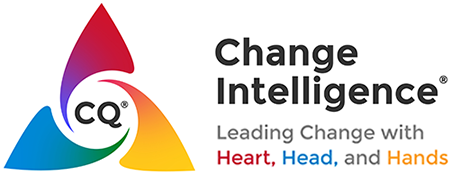Here are some of my favorite inspirational tidbits from remarkable change leaders around the world:
“Think globally, act locally, panic internally” –(David Rock quoting another colleague)
I love this quote and I believe it so crisply captures the change leader conundrum – so many needs, so many opportunities, so much fear! So often, we focus on easing the transition of the targets of change – but what about the emotions and confusion of the guy at the front of the room leading the troops over the hill? That’s why I created the CQ System – to give leaders a framework for understanding the uncertainty and anxiety they experience along with the change their teams and employees must absorb and integrate. With David’s quote in mind, what can you do to ground yourself so that you can act in spite of the internal stress you may be facing?
“If everything is under control, you’re not going fast enough” -(Dan Denison quoting racing great Mario Andretti)
What a perfect phrase to keep in mind when we’re coming up to yet another curve in the road and feel the wheels wobbling under us! Control, certainty – all illusions. Complexity, chaos – we need new mindsets and behaviors, systems and processes, to lead today. How can we cultivate a tolerance for reasonable risk-taking, comfort with decision-making in the face of ambiguity and incomplete information? How can we help clients (and ourselves) bake in time for intentional reflection, to ensure we are learning as we change and not simply rashly reacting?
“We’re moving to teach people how to fish” –(Melanie Francis, who led the Change Management Centers of Excellence at Symantec)
I work with many organizations that want to build Change Management (CM) Centers or Communities of Practice to develop a common approach and toolkit to guide the process. It’s important that CM practitioners do not devolve into change-by-checklist template-filler-inners, but rather partners with a seat at the table throughout the transformation. Are there opportunities on your current project or in your organization to educate key stakeholders about how to conduct a leadership alignment exercise to ensure an initiative has the right sponsorship at the onset? A readiness assessment to gauge end user understand and ability to adopt to ensure solutions are on-target?
“What do you mean when you say ‘Change Management’?” -(Kristin Harper, formerly the Director of IT Strategic Change at McDonald’s)
As professionals, so often one of our first responsibilities is to enlighten our clients that “change management is more than communications and training”! Moving beyond a focus on the tools and tactics to principles and benefits when working with stakeholders goes far in making a meaningful difference and elevating the field to have the impact it can and should. That said, being asked to help create a communication plan for a change effort – even when it’s practically an afterthought and turnover is tomorrow – is still a very viable first step entry point to get the conversation started. Is there “low hanging fruit” you could pick right now, which would both add value to a current change process as well as educate others about the value of integrating CM throughout the change lifecycle in the future?
“Experience is a great but a cruel teacher – you get the test first, and the lesson later” –(James Chisholm from ExperiencePoint)
This to me is both one of the most critical services we can provide our clients (whether we’re internal leaders or external consultants). With all of us working on multiple projects at once, at multiple stages, with multiple stakeholders – how overwhelming, but what a goldmine of insights and learning. All lost if in our zeal to do it all we sprint from one meeting to the next, one email to the next, one crisis to the next. Powering down to power up – facilitating after action review sessions, organizing reflection roundtables, coming to conferences – enables us to capture, communicate, and capitalize on lessons learned as well as refresh our perspectives and rejuvenate our energies. Can you start where you are and organize even an informal gathering to begin to identify and share best practices? What works and what doesn’t in your environment, with your people, in your workplace to move together in positive, new directions?
